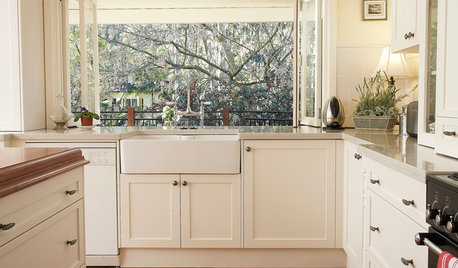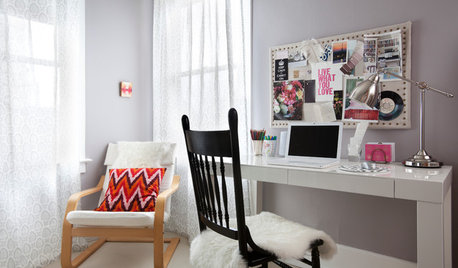No electrical wiring FAQ would be complete without addressing the issue of subpanels. If, after reading the article below, you have any questions or feel that your situation is not covered by the article, please visit the Electrical Wiring Forum to ask any follow-up questions.
A very special thanks to Tom_O for writing this article and sharing it with us.
----------------------------------
This is a general guideline about the installation of a sub-panel in a remote building, hopefully it will contain the information you need. At the bottom will be a list of items you can omit if the sub-panel will be located in the same building as your service entrance. Most of the requirements would apply to any structure, but I have aimed this at installations on residential property.
If your installation is subject to inspection, you should talk to your local code enforcement official prior to starting work.
Wire - Type and size
You can use underground cable. The following capacities apply for copper cables:
Cable ampacities - 60C temperature rating
#10 - 30 amps
#8 - 40 amps
#6 - 55 amps (can be protected at 60 amps)
#4 - 70 amps
#2 - 95 amps (can be protected at 100 amps)
If you elect to use cable, it will need to be protected from damage if it emerges from the ground on the exterior side of a building. This protection can be rigid metal conduit, intermediate metal conduit or schedule 80 PVC. The protection must extend from the bottom of the trench to the height of 8' above grade, or where the cable enters the building, whichever is less.
The preferred method is to run PVC conduit with individual conductors. The minimum size should be 1 1/4", as this will allow you to run up to a 100 amp feeder. The following capacities are for copper conductors with THWN, THW or XHHW insulation:
Individual conductor ampacities - 75C temperature rating
#10 - 30 amps
#8 - 50 amps
#6 - 65 amps (can be protected at 70 amps)
#4 - 85 amps (can be protected at 90 amps for outbuildings. If this sub-panel is in a dwelling #4 may be good for 100 amps - see notes below)
#3 - 100 amps
Please see the notes at the end regarding wire ampacities and temperatures!
Number of conductors needed
For various reasons, it is best to run 4 conductors. This would be two 'hots', one grounded conductor (neutral) and one equipment ground (bare or green).
Depth of trench
For cable, you will need 24" of cover. For PVC conduit, you will need 18" of cover.
While you have your trench open, you should put in at least one spare conduit (3/4" minimum size) for future use. It would be a shame to dig up your yard again just to run a phone line.
Sub-panel main breaker
At your remote building, your sub-panel must have a main breaker if there will be more than six breakers used in your panel. It is recommended to put in a main breaker even if only a couple of circuits will be used initially. If the main breaker is to be back-fed, it must be held in place by a screw or clip that will prevent it from being unplugged by hand. You can use a 100 amp breaker even if the size of the feeder circuit is less, however, check the wire range allowed for the connection to the breaker to make sure that the wire size you are using is within the acceptable range for that particular breaker.
Grounding and bonding of the sub-panel
At the sub-panel there must be no connection between the neutral bus bar and the equipment ground bus bar or the neutral bus bar and the sheet metal of the breaker box. You may need to purchase an additional bus bar for the equipment ground since many panels, especially those that come with a main breaker, do not come equipped with one. If the panel comes with a bonding screw or bonding strap, do not install it to the neutral. Depending on the brand of panel, you may need it to connect the ground bus to the sheet metal enclosure.
At the remote building, you will need to drive two eight-foot ground rods located a minimum of six feet from each other and connect them to the equipment ground bus using #6 copper wire. The easiest way is to make one continuous run without cutting the wire. The rods must be driven in flush or below grade. The ground rod clamps must be listed for direct burial. It will say so on the clamp or look for the letters "DB". If you have any metal piping (except gas lines) in the remote building, you must bond it to the equipment ground bar, use #6 wire. If the connection is to a metal water line, the connection should be within the first 5 feet of where the water line enters the building. All connections must remain accessible, so if the connection will end up inside a wall, you must provide an access plate.
I realize that some of the things I've included exceed the code minimum, but this is an attempt to make a "one size fits all" response without getting into a really long discussion.
For a sub-panel in the same dwelling there is no need for additional ground rods or connections to metal piping. Also, no need for a main breaker in the sub-panel, regardless of the number of circuits. Unless you are running metal conduit, you will need to run a 4 wire feeder.
Wire ampacity notes
If you are installing a sub-panel in your house, the ampacity of #4 copper or #2 aluminum is 100 amps as determined by a special table in the code. However, in some jurisdicitons, there is a very strict interpretation of this table and these ampacities would not be allowed for a sub-panel in your house. If you aren't sure, ask your inspector if he will allow the ampacities shown in table 310-15(B)(6) or go up one size wire to #3 copper or #1 aluminum.
The current carrying capacity of an insulated conductor is related to the type of insulation. Modern insulation allows conductors to be operated at higher current levels which generate more heat. There is a problem if you install the modern conductors into an older service panel as the higher temperatures could damage the older types of insulation. If your home was wired prior to 1985, you may have conductors with a lower rated insulation. If you have an older home or aren't sure, to be on the safe side, use the wire capacity table above that deals with cables. The larger conductors that you will use will now be in the same temperature class as the older styles of insulation.
Circuit breaker notes
Circuit breakers and panelboards also have a temperature rating. Most modern circuit breakers will be marked 60/75 C. This means that this circuit breaker can be used with wire being operated at its 75 degree C rating without doing damage to the circuit breaker.
However (there always seems to be one of those), the entire panel must be listed for use at that temperature. Older panels will not have the higher temperature rating. In order to find out if your existing panel is rated for 75 degree ampacities, you will need to read all of those fine print labels. For us older guys, that means break out the magnifying glass. You cannot just stick a new circuit breaker into an old panel and assume that it will be safe.
During your exploration of all the fine print, you should be looking for some indication that 75 degree wire can be used at its full temperature rating. What you're hoping to see is a reference to 60/75C for conductor sizes #14 to #1 AWG. If you don't see the 75 degree listing, then the wire must be operated at the 60 degree rating, therefore use the table above for cables to select the correct wire size.
Article written by Tom_O
---------------------------------------
Be sure to browse our other FAQ's for more information on feeders, wire types, grounding and bonding.













Related Discussions
Best way to install second subpanel
Q
Anything I should know about my new soapstone?
Q
What should I know about safety and health issues relating to concret
Q
Should I be upset about the quality of this tile install?
Q